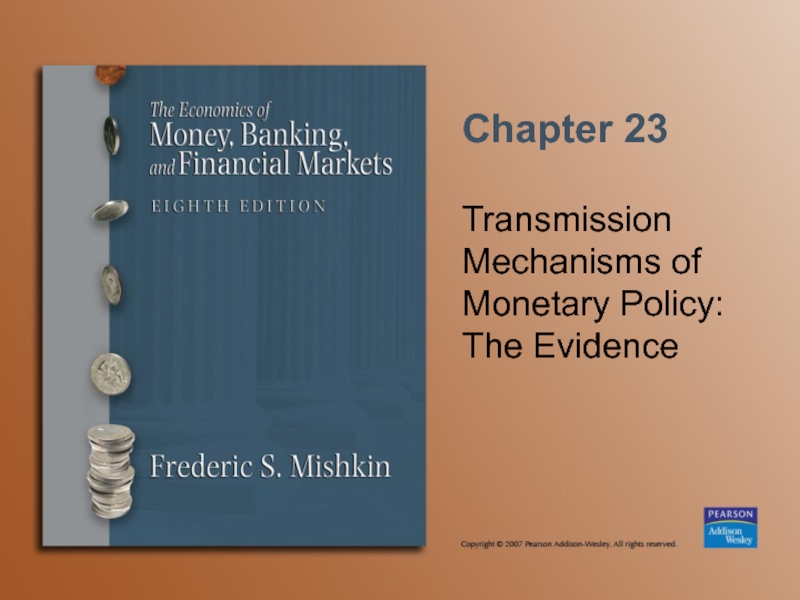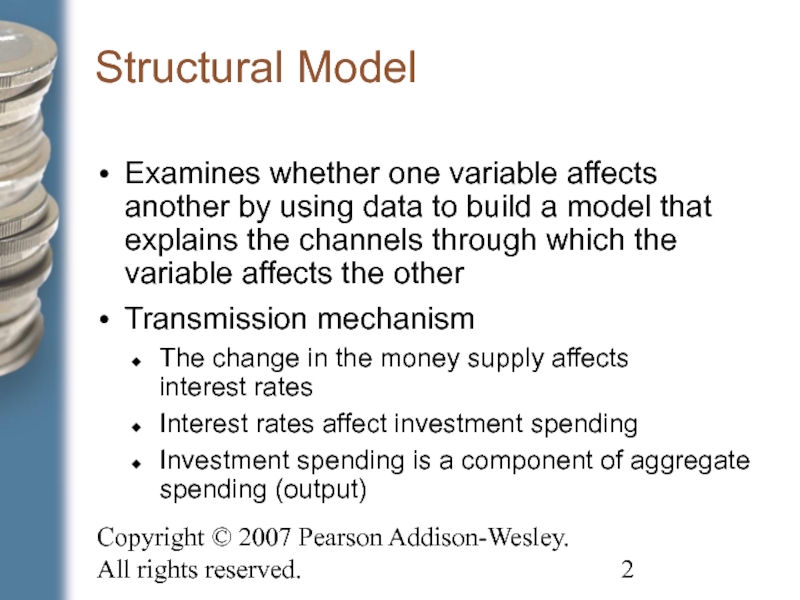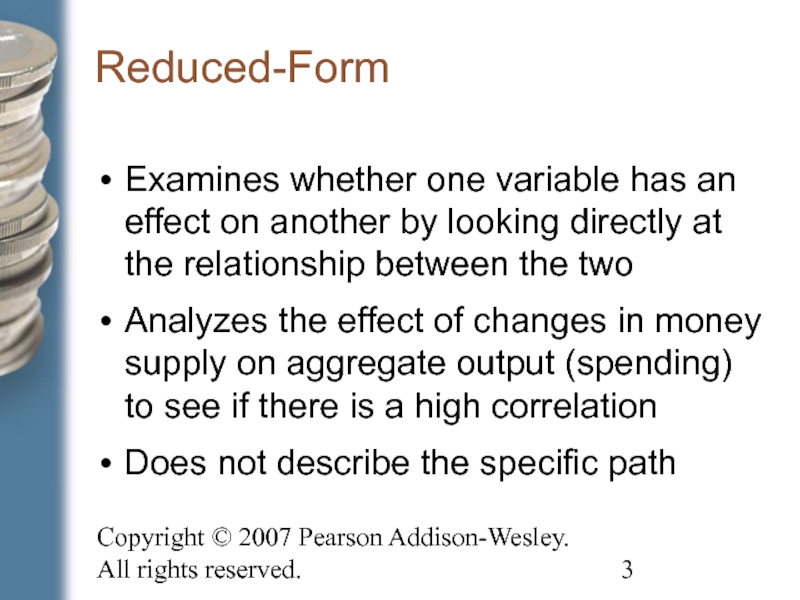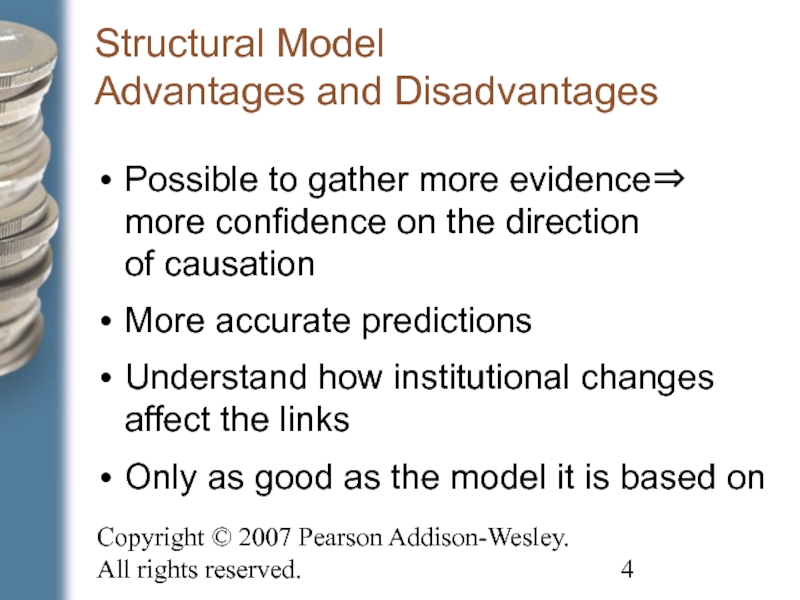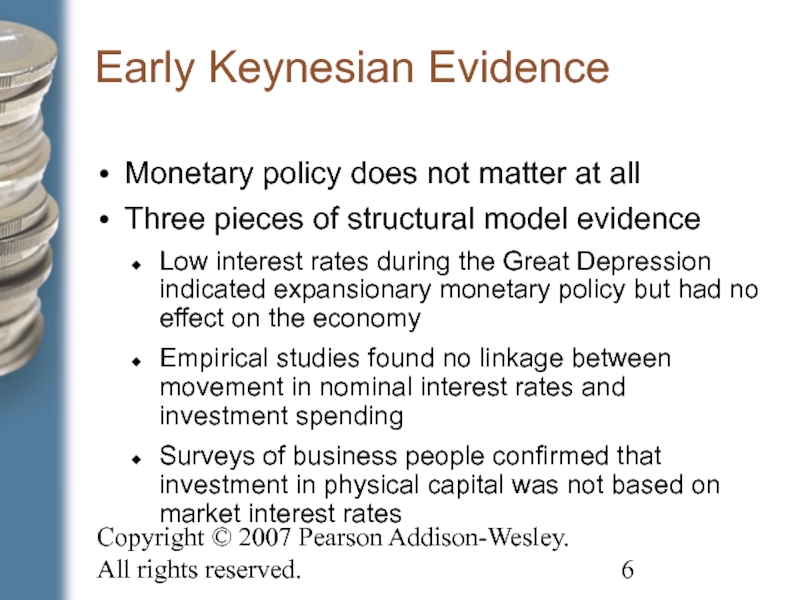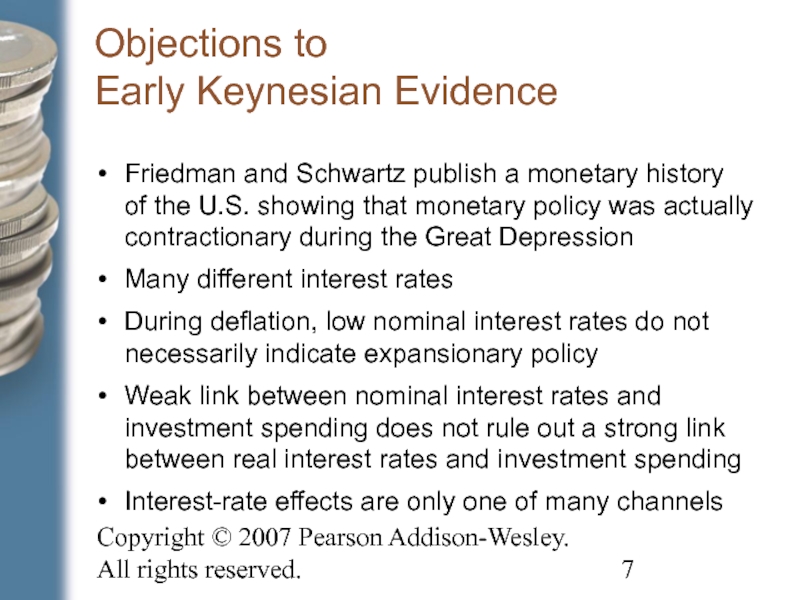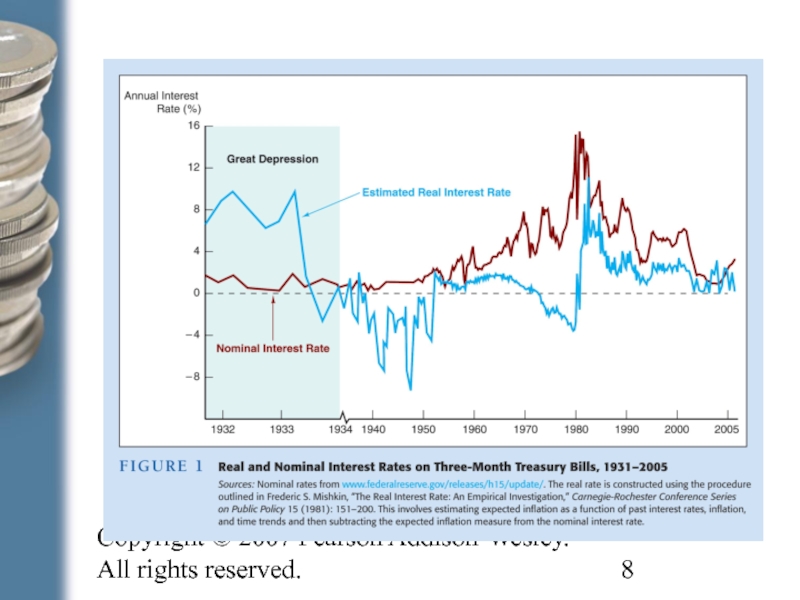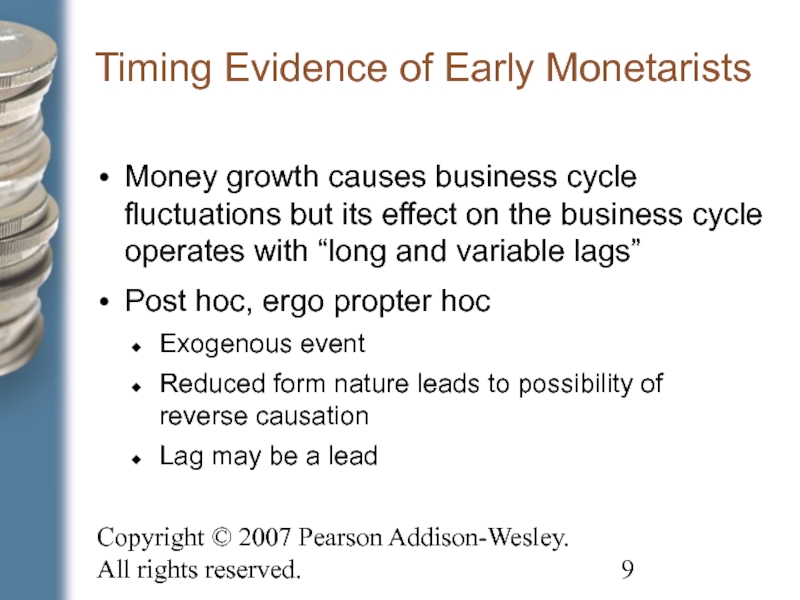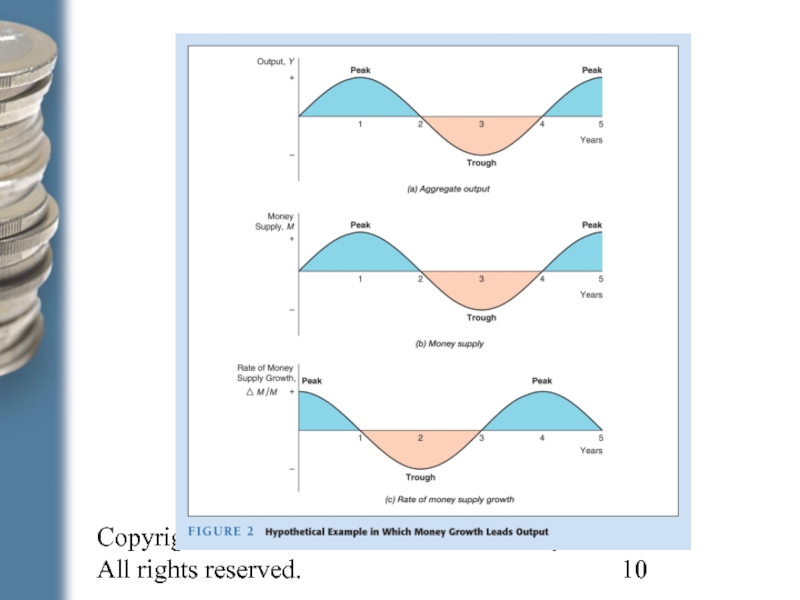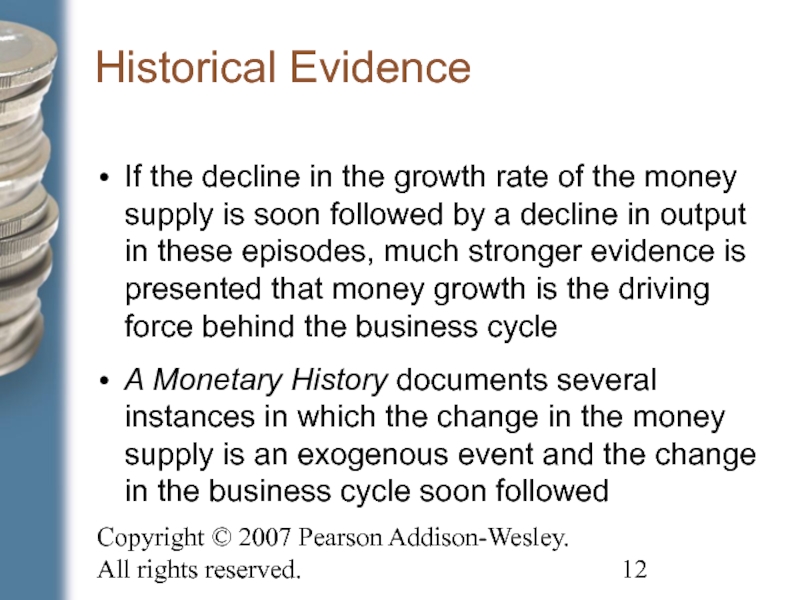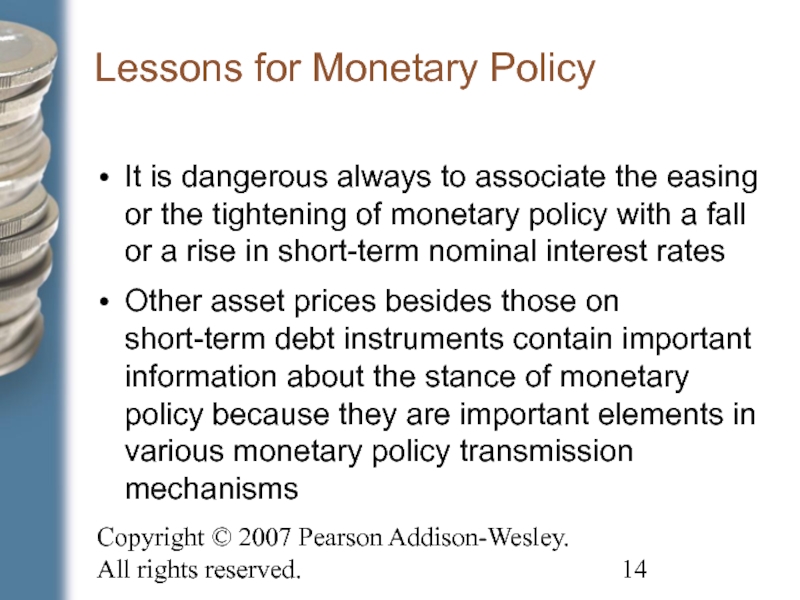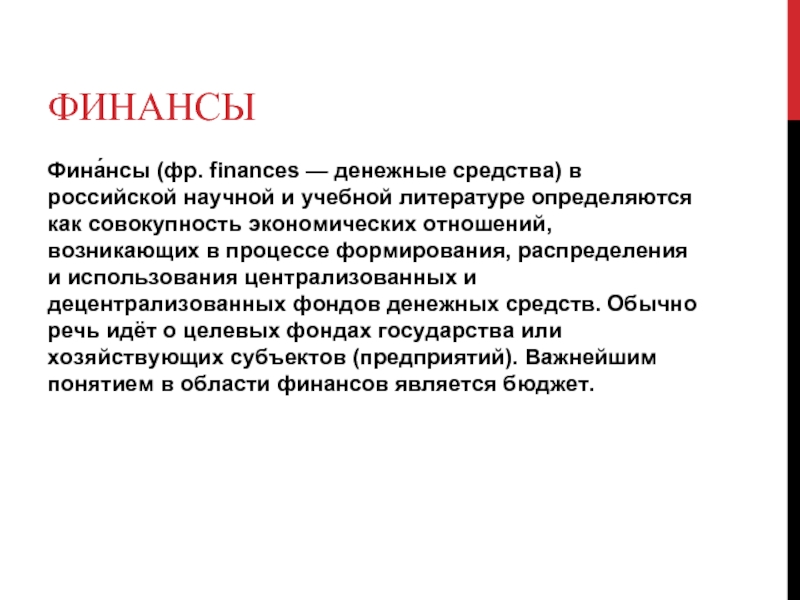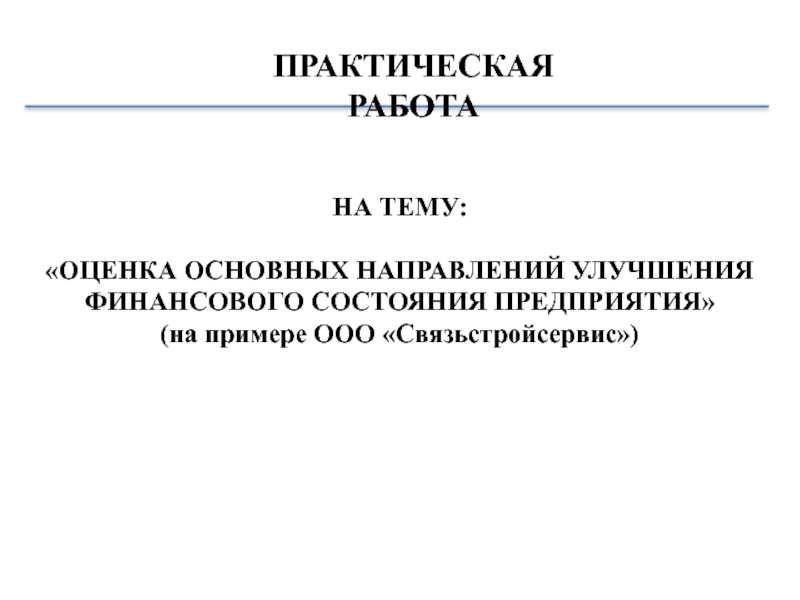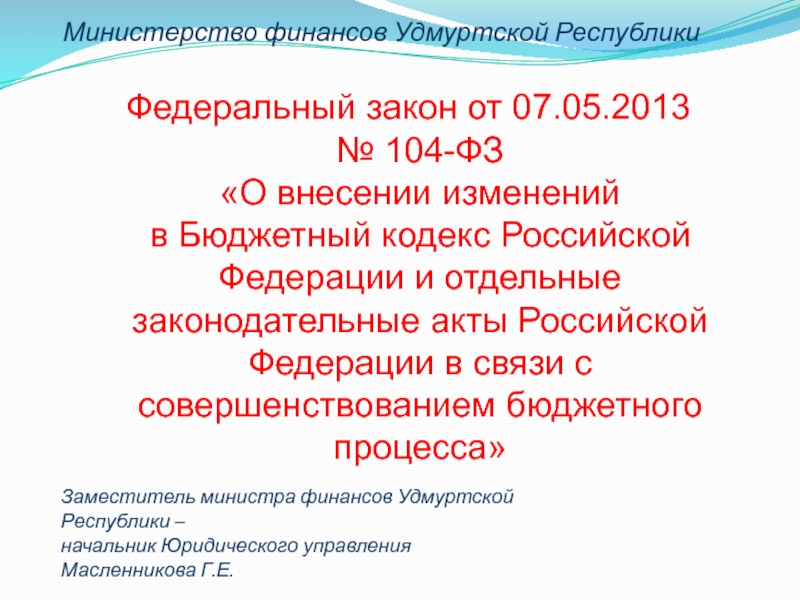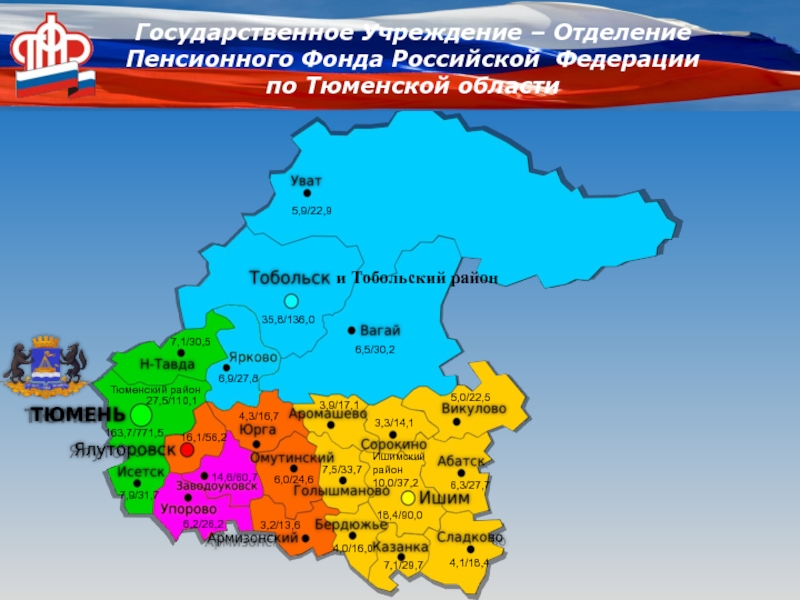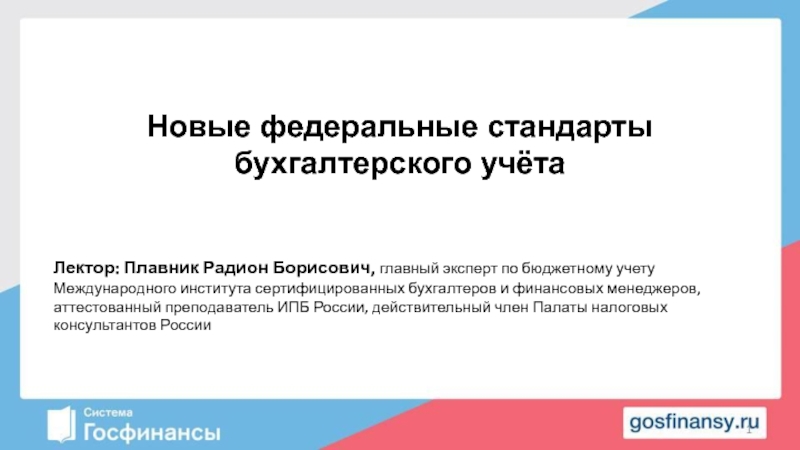- Главная
- Разное
- Дизайн
- Бизнес и предпринимательство
- Аналитика
- Образование
- Развлечения
- Красота и здоровье
- Финансы
- Государство
- Путешествия
- Спорт
- Недвижимость
- Армия
- Графика
- Культурология
- Еда и кулинария
- Лингвистика
- Английский язык
- Астрономия
- Алгебра
- Биология
- География
- Детские презентации
- Информатика
- История
- Литература
- Маркетинг
- Математика
- Медицина
- Менеджмент
- Музыка
- МХК
- Немецкий язык
- ОБЖ
- Обществознание
- Окружающий мир
- Педагогика
- Русский язык
- Технология
- Физика
- Философия
- Химия
- Шаблоны, картинки для презентаций
- Экология
- Экономика
- Юриспруденция
Transmission mechanisms of monetary policy: the evidence презентация
Содержание
- 1. Transmission mechanisms of monetary policy: the evidence
- 2. Copyright © 2007 Pearson Addison-Wesley. All rights
- 3. Copyright © 2007 Pearson Addison-Wesley. All rights
- 4. Copyright © 2007 Pearson Addison-Wesley. All rights
- 5. Copyright © 2007 Pearson Addison-Wesley. All rights
- 6. Copyright © 2007 Pearson Addison-Wesley. All rights
- 7. Copyright © 2007 Pearson Addison-Wesley. All rights
- 8. Copyright © 2007 Pearson Addison-Wesley. All rights reserved.
- 9. Copyright © 2007 Pearson Addison-Wesley. All rights
- 10. Copyright © 2007 Pearson Addison-Wesley. All rights reserved.
- 11. Copyright © 2007 Pearson Addison-Wesley. All rights
- 12. Copyright © 2007 Pearson Addison-Wesley. All rights
- 13. Copyright © 2007 Pearson Addison-Wesley. All rights reserved.
- 14. Copyright © 2007 Pearson Addison-Wesley. All rights
- 15. Copyright © 2007 Pearson Addison-Wesley. All rights
Слайд 2Copyright © 2007 Pearson Addison-Wesley. All rights reserved.
Structural Model
Examines whether one
Transmission mechanism
The change in the money supply affects interest rates
Interest rates affect investment spending
Investment spending is a component of aggregate spending (output)
Слайд 3Copyright © 2007 Pearson Addison-Wesley. All rights reserved.
Reduced-Form
Examines whether one variable
Analyzes the effect of changes in money supply on aggregate output (spending) to see if there is a high correlation
Does not describe the specific path
Слайд 4Copyright © 2007 Pearson Addison-Wesley. All rights reserved.
Structural Model
Advantages and Disadvantages
Possible
More accurate predictions
Understand how institutional changes affect the links
Only as good as the model it is based on
Слайд 5Copyright © 2007 Pearson Addison-Wesley. All rights reserved.
Reduced-Form
Advantages and Disadvantages
No restrictions
Correlation does not necessarily imply causation
Reverse causation
Outside driving factor
Слайд 6Copyright © 2007 Pearson Addison-Wesley. All rights reserved.
Early Keynesian Evidence
Monetary policy
Three pieces of structural model evidence
Low interest rates during the Great Depression indicated expansionary monetary policy but had no effect on the economy
Empirical studies found no linkage between movement in nominal interest rates and investment spending
Surveys of business people confirmed that investment in physical capital was not based on market interest rates
Слайд 7Copyright © 2007 Pearson Addison-Wesley. All rights reserved.
Objections to
Early Keynesian
Friedman and Schwartz publish a monetary history
of the U.S. showing that monetary policy was actually contractionary during the Great Depression
Many different interest rates
During deflation, low nominal interest rates do not necessarily indicate expansionary policy
Weak link between nominal interest rates and investment spending does not rule out a strong link between real interest rates and investment spending
Interest-rate effects are only one of many channels
Слайд 9Copyright © 2007 Pearson Addison-Wesley. All rights reserved.
Timing Evidence of Early
Money growth causes business cycle fluctuations but its effect on the business cycle operates with “long and variable lags”
Post hoc, ergo propter hoc
Exogenous event
Reduced form nature leads to possibility of
reverse causation
Lag may be a lead
Слайд 11Copyright © 2007 Pearson Addison-Wesley. All rights reserved.
Statistical Evidence
Autonomous expenditure variable
For Keynesian model AE should be highly correlated with aggregate spending but money supply should not
For Monetarist money supply should be highly correlated with aggregate spending but AE should not
Neither model has turned out be more accurate than the other
Слайд 12Copyright © 2007 Pearson Addison-Wesley. All rights reserved.
Historical Evidence
If the decline
A Monetary History documents several instances in which the change in the money supply is an exogenous event and the change in the business cycle soon followed
Слайд 14Copyright © 2007 Pearson Addison-Wesley. All rights reserved.
Lessons for Monetary Policy
It
Other asset prices besides those on short-term debt instruments contain important information about the stance of monetary policy because they are important elements in various monetary policy transmission mechanisms
Слайд 15Copyright © 2007 Pearson Addison-Wesley. All rights reserved.
Lessons for Monetary Policy
Monetary policy can be highly effective in reviving a weak economy even if short-term interest rates are already near zero
Avoiding unanticipated fluctuations in the price level is an important objective of monetary policy, thus providing a rationale for price stability as the primary long-run goal for monetary policy
